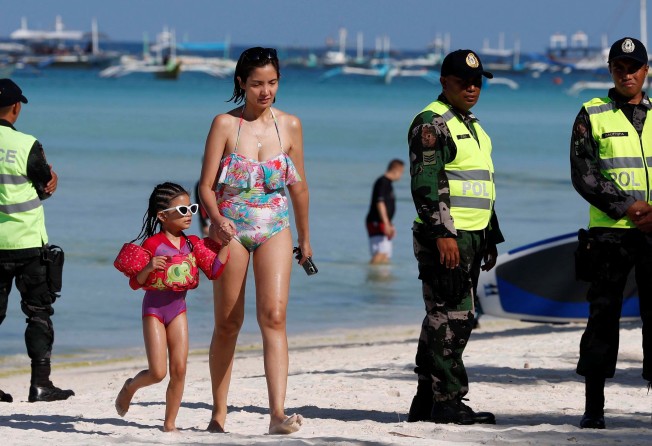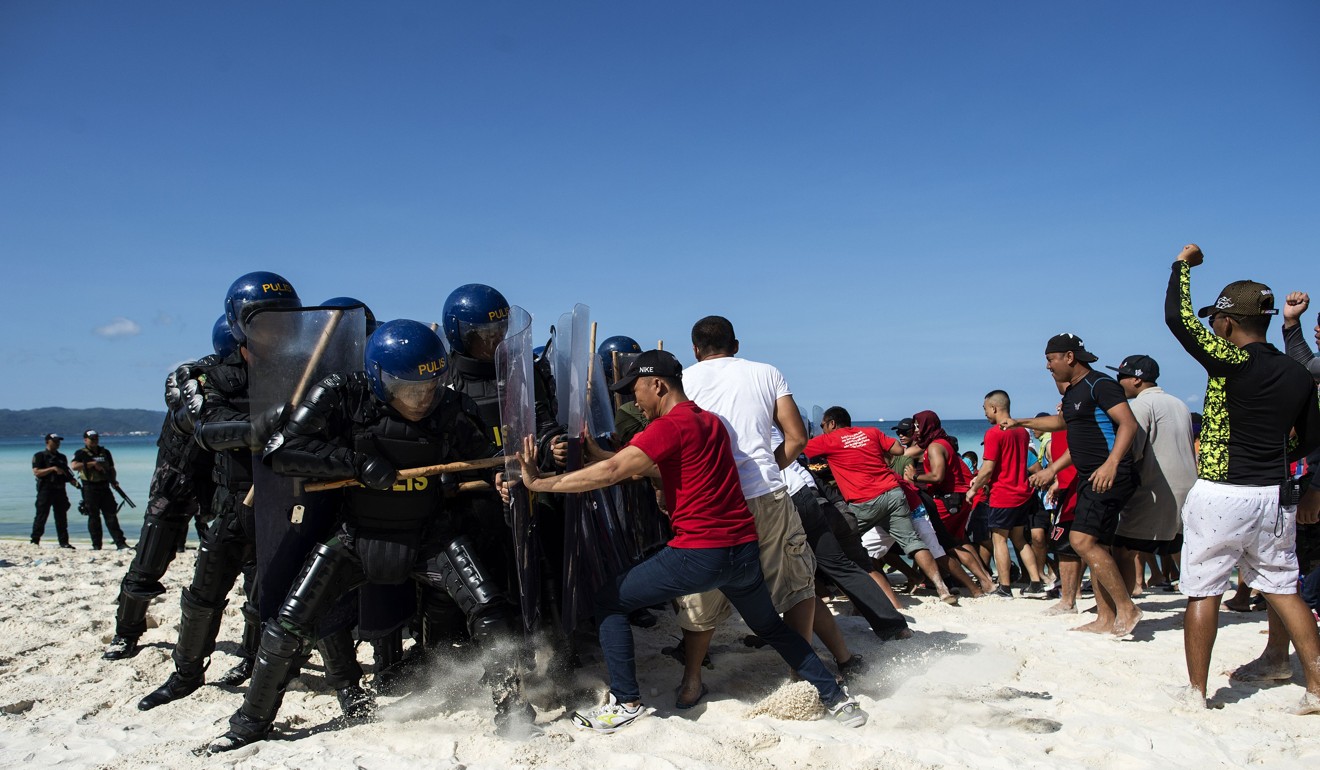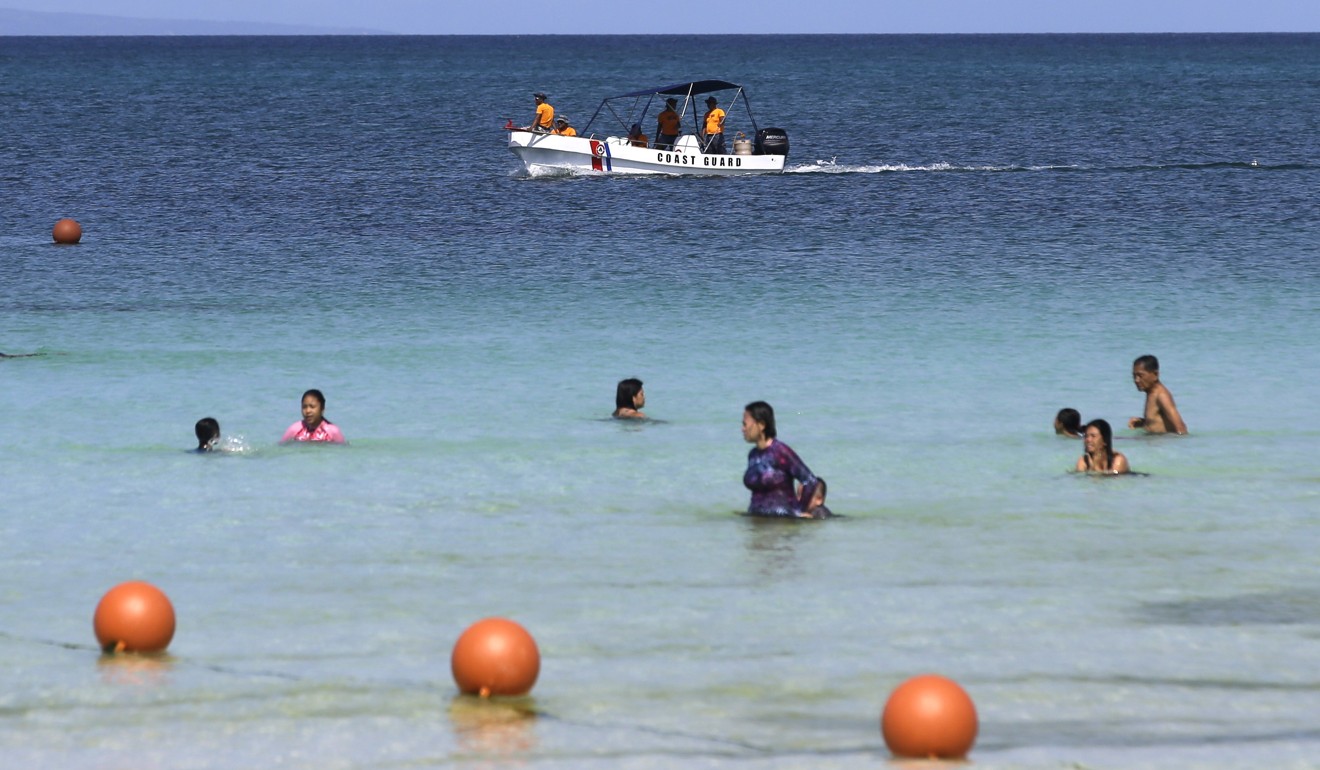
Top Philippine tourist spot Boracay closes under high security for six-month clean-up
President Rodrigo Duterte has called the island a ‘cesspool’ due to sewage being pumped directly into the sea

The Philippines closed its most famous holiday island Boracay to tourists on Thursday for a six-month clean-up, which the government has imposed with a muscular show of its security forces.
Rifle-wielding police were posted at entry points to the once-pristine island that has become tainted by heavy commercialisation and overdevelopment.

Regional police head Cesar Binag said the shutdown began after midnight, with tourists barred from boarding the ferry that is the main way onto the island.
“Boracay is officially closed to tourists. We are not closing establishments but tourists cannot enter. We are implementing the instruction of the president,” Binag said.
About 600 policemen were deployed, with some performing drills – including riot officers battling protesters and mock hostage-taking of sunbathers – all before startled locals.
“My nephews and nieces were afraid,” Filipino tourist Tara Calcetas said. “It was scary because there were people swimming yesterday and the police were firing guns as if there was a criminal here.”
Locals were also concerned.
“It looks like we are at war,” said Jessica Gabay, a grocery seller, late on Wednesday. “Maybe the authorities are doing this to instil fear so people will follow the rules.”
President Rodrigo Duterte ordered the shutdown this month after calling the resort a “cesspool”, dirtied by tourism-related businesses dumping raw sewage directly into the sea.
During the closure, only residents with ID cards are allowed to board ferries to the tiny island that is home to around 40,000 people.
On Thursday morning, police began patrolling the beach to enforce a rule prohibiting swimming except in one designated area marked by buoys.

Boats are barred from sailing within 3km (1.9 miles) of the shoreline and only Boracay residents are allowed to fish there.
The government said the heavy security presence was intended to quash any unrest from those unhappy with the shutdown, including some of the roughly 30,000 people employed in the island’s bustling tourist trade.
But resistance was light in the run-up to the closure, with no violent protests and most of the criticism focusing on the plight of laid off staff.
The workers have been drawn by the relatively good wages on the island that has seen the number of annual visitors roughly quadruple to 2 million since 2006.
Those tourists, a growing number of whom are Chinese and Korean, pumped roughly US$1 billion into the Philippine economy last year.
But its growth from a sleepy backpacker hideaway into a mass-tourism hub with fast food outlets on the beach has taken a toll.

Unchecked construction has eaten away at the island’s natural beauty, while slimy algae-filled waves in some areas and mountains of discarded drink bottles are problems acknowledged even by critics of the shutdown.
“I’m all for rehabilitation and preserving it but clearly this is not the way to do it,” Philippine political analyst Ashley Acedillo said.
He called the closure an “ill-thought through, unplanned and knee-jerk action” that did not take into account the economic impact on the island’s workers and business community.

The Philippines has pledged to use the closure to shore up the island’s infrastructure, bulldoze illegal structures and clean up the mess left by years of unchecked growth.
The government has billed it as a long-overdue response to a problem that is not without precedent.
Other Southeast Asian holiday destinations have also cracked down on uncontrolled tourism welcomed by locals needing income and authorities eager for development.
Thailand’s Maya Bay, made famous by the 2000 film The Beach starring Leonardo DiCaprio, will be off limits for four months from June to September, officials announced last month, in a bid to save its ravaged coral reefs.